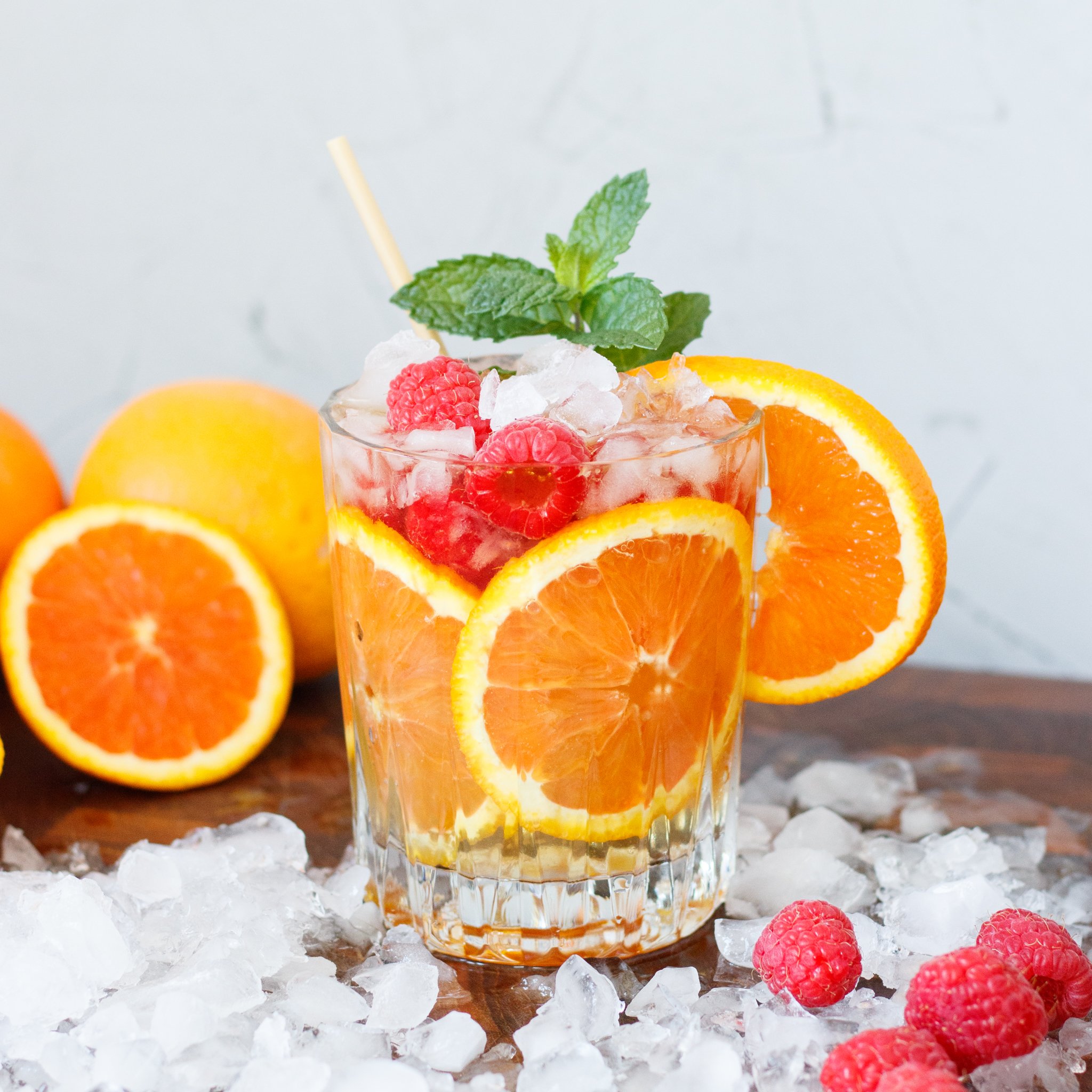3 ounces brandy or cognac
1/2 ounce simple syrup
1 to 2 ounces club soda, to taste
Orange slices and seasonal berries, for garnish
Line an old-fashioned glass with orange slices and fill with crushed ice, Then pour in brandy and simple syrup. Stir to combine, and top with soda. Add the fruit & berry garnishes (skewered or piled on top of the ice).
Serve with a straw and enjoy.
Cobblers became popular toward the end of the 1830s, around the same time that the ice trade in the US was expanding, making it easier to create cocktails with loads of ice. Much like a julep, cobblers call for crushed ice and plenty of it.
In fact, no one is exactly certain where the name cobbler comes from, but according to David Wondrich, it may have something to do with the “cobbles” of ice the cocktail is built on.
Originally cobblers were always made with wine or fortified wine. The sherry cobbler was definitely the most popular variety, but in Jerry Thomas’ 1862 bartenders guide he also includes recipes for a Catawba wine cobbler, a claret cobbler, a Hock cobbler (British term for German white wine) and a sauterne cobbler.
But sometimes cobblers were made with stronger spirits. Jerry Thomas also included a whiskey cobbler recipe in his book, and according to David Wondrich, Brandy cobblers were also super popular in the 1850s, especially in New York.
Once you have crushed ice and sliced citrus, building a cobbler is very easy to do. The one thing to keep in mind though is that Jerry Thomas insists that special attention needs to be paid to how it’s presented.
“The cobbler does not require much skill in compounding, but to make it acceptable to the eye, as well as to the palate, it is necessary to display some taste in ornamenting the glass after the beverage is made.” He even includes an illustration of how a cobbler should look.









